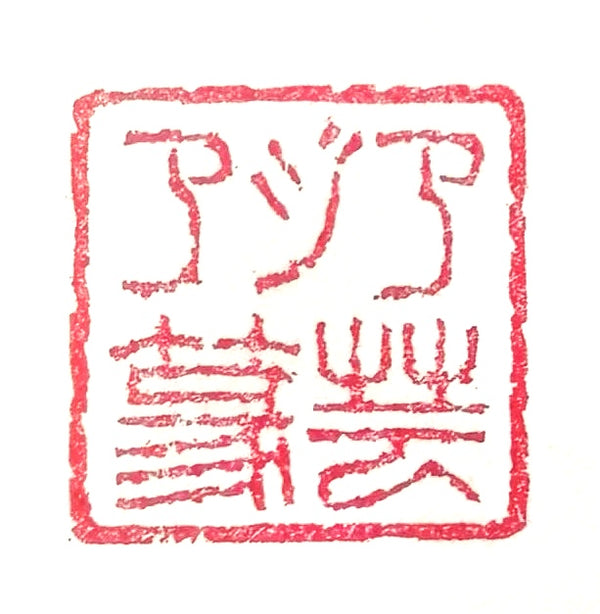The use and application of stamp materials in contemporary art: A new form of expression that brings tradition to life
Share
Introduction
When you hear the term "seal material," many people may think of the world of classical seal carving or calligraphy. However, in recent years, this traditional material has been reborn as a new form of expression in fields such as contemporary art, digital art, and product design.
In this article, we will explore future possibilities while introducing examples of the use of seal materials and seal carving in contemporary art, as well as creative applications by artists.
The "beauty of materials" in seal materials and seal carving
One of the reasons why modern artists are turning their attention to print materials is their appeal as a material.
- Rich colors of natural stone
・Soft and warm texture
・Surface pattern and transparency
・The object-like nature of a small cube
These characteristics make it a striking addition to installations, sculptures, spatial art, and more.
Examples of the use of stamp materials in contemporary art
1. Repetition of prints in abstract works
His technique of repeatedly pressing the seal impressions (press marks) onto canvas or Japanese paper to create rhythms and patterns is gaining attention. This is acclaimed as a form of physical art that focuses on the act of "carving" and "pressing" rather than "writing."
2. Display of seal materials in an installation
The exhibition combines light-transmitting seal materials (such as Tianhuangseki and Hibiscus) with lighting to create works that give the impression of the stone "breathing" in the space. This can be seen as a minimalist expression using natural materials.
3. A fusion of calligraphy, seal carving, and video
In recent years, "live calligraphy" performances have been gaining attention, in which calligraphy and seal carving are performed in real time, recorded and reconstructed on video. The process of carving into seal material itself is being reinterpreted as art.
Application to product design
1. Brand logo using seal carving
An increasing number of Japanese craft brands and manufacturers of traditional Japanese goods are using seal impressions as their brand marks and logos. Their designs, which combine tradition and modernity, are gaining recognition both at home and abroad.
2. Expanding into stationery and accessories
・Make small seals into keychains or necklaces
・Wrapping paper and product tags using stamped impressions
・Selling engraved seals as art objects
These developments are expanding the ways in which seal materials can be enjoyed beyond the conventional notion of "seal materials = practical tools."
Rediscovered by international artists
Seal carving culture is now attracting attention not only in Asia but also in Europe and the United States. In particular, there are increasing examples of overseas artists who resonate with minimalism and Zen aesthetics using seal materials as materials.
-
"Sealed ceramic works" by a French ceramic artist
-
"Abstract painting using red ink as a component element" by an American artist
-
"Ink Art Exhibition" at contemporary art museums in Korea and Taiwan
Examples of application and sales on Shopify etc.
You can also sell your own stamp art on Shopify and other platforms. For example:
・Sale of artist stamp collections
・T-shirts and tote bags printed with seal engraving designs
・Gift set of engraved seal material
By combining it with social media and online shops, we can communicate the value and culture of seal materials in new ways.
Summary: Engraving the "future" of seal materials
Seal materials are artistic materials that have been refined through tradition, but at the same time, they also hold great potential in contemporary art and design.
Now that technology and methods of expression are evolving, the value of "carving with your hands" and "touching stone" is being reevaluated.
We encourage you to go beyond the boundaries of seal carving and try your hand at free expression using seal materials. There you will discover possibilities for beauty beyond your imagination.
